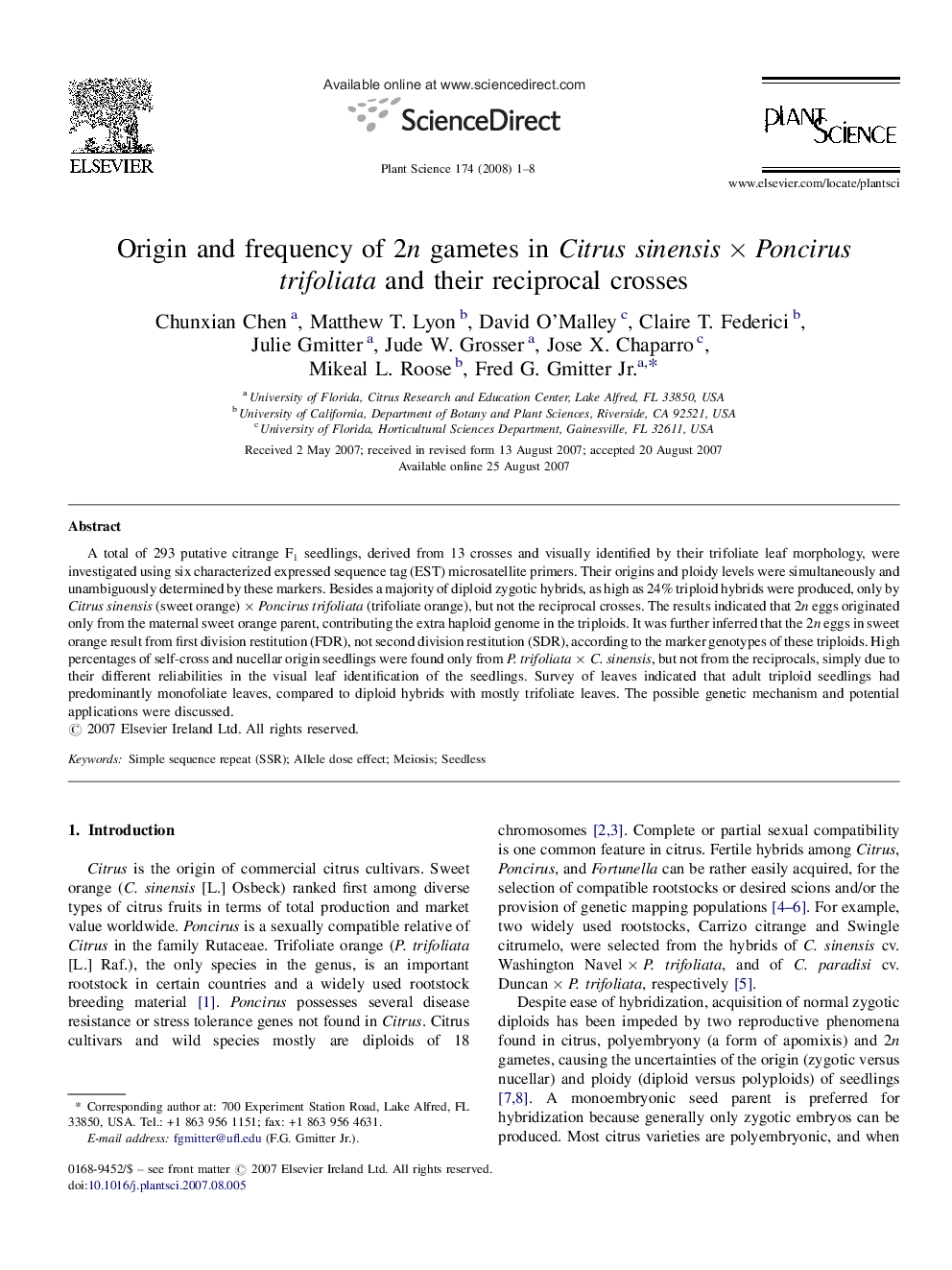| Article ID | Journal | Published Year | Pages | File Type |
|---|---|---|---|---|
| 2018466 | Plant Science | 2008 | 8 Pages |
A total of 293 putative citrange F1 seedlings, derived from 13 crosses and visually identified by their trifoliate leaf morphology, were investigated using six characterized expressed sequence tag (EST) microsatellite primers. Their origins and ploidy levels were simultaneously and unambiguously determined by these markers. Besides a majority of diploid zygotic hybrids, as high as 24% triploid hybrids were produced, only by Citrus sinensis (sweet orange) × Poncirus trifoliata (trifoliate orange), but not the reciprocal crosses. The results indicated that 2n eggs originated only from the maternal sweet orange parent, contributing the extra haploid genome in the triploids. It was further inferred that the 2n eggs in sweet orange result from first division restitution (FDR), not second division restitution (SDR), according to the marker genotypes of these triploids. High percentages of self-cross and nucellar origin seedlings were found only from P. trifoliata × C. sinensis, but not from the reciprocals, simply due to their different reliabilities in the visual leaf identification of the seedlings. Survey of leaves indicated that adult triploid seedlings had predominantly monofoliate leaves, compared to diploid hybrids with mostly trifoliate leaves. The possible genetic mechanism and potential applications were discussed.
